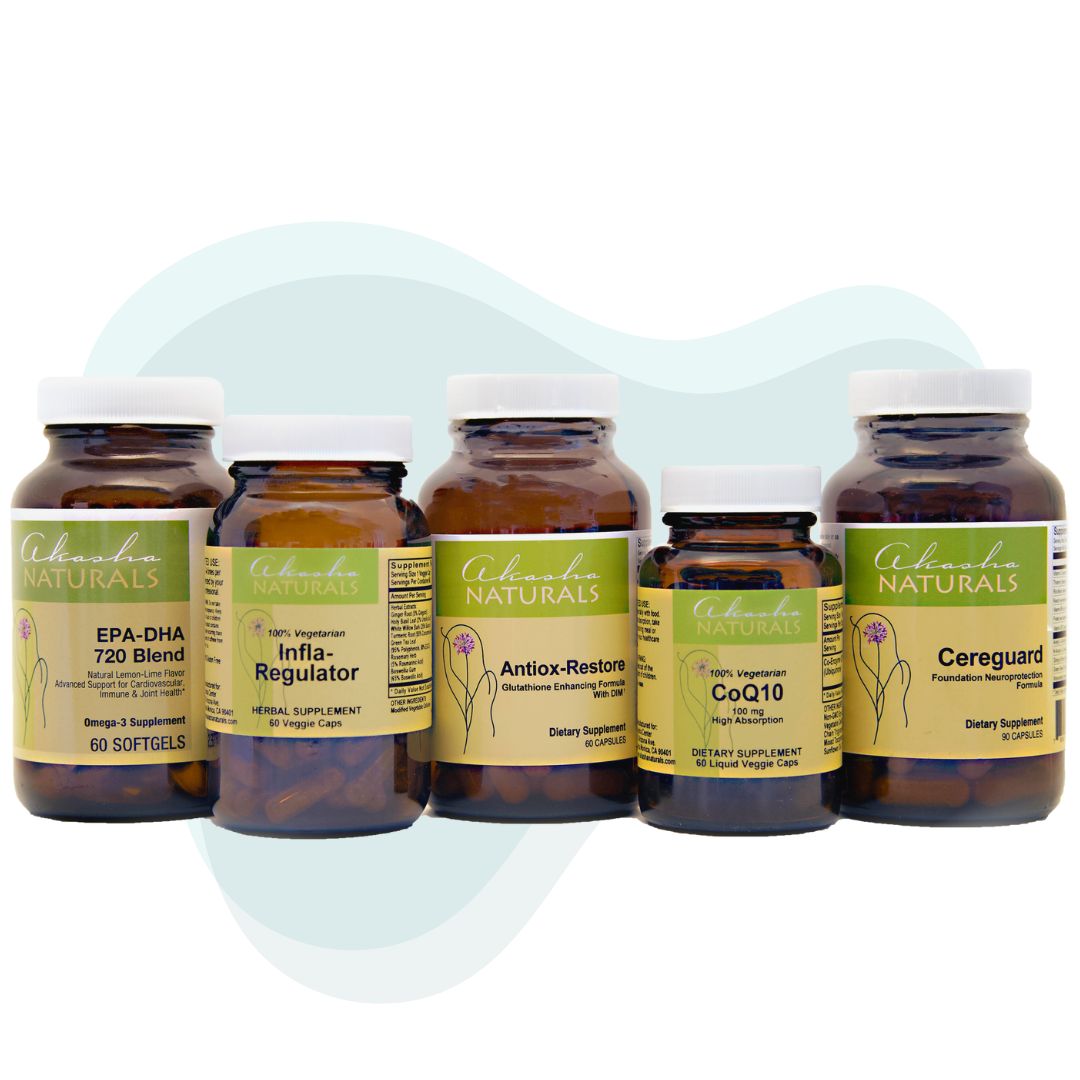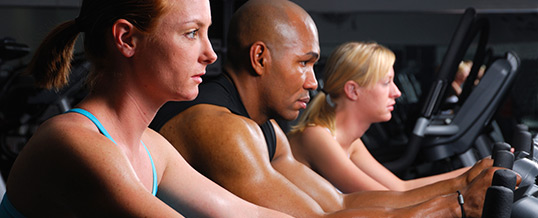By Danél Lombard,MPT, MA, E-RYT
When it comes to injuries, we often think of the unfortunate accident. Whether it’s a car accident, or trip-and-fall accident, it seems to be something out of our control and a case of bad luck. But what if I tell you that injuries often occur slowly over time because of lifestyle choices and habits? When it comes to physical injuries, a lot can actually be done preventatively. Anything from knee injuries to back injuries can be prevented most of the time if we set ourselves up for success. It all comes down to the daily choices we make in the following categories:
- Nutrition
- Exercise
- Posture and body mechanics
- Ergonomics
- Breath and Mindfulness
How can nutrition help prevent injuries? It is easy to see how nutrition can help us heal from injury, but prevention? Well, the same mechanisms that help us heal also help us be more resilient and safeguarded against injury. Think about the choices you make every time you decide to eat or drink something. Are you choosing foods or drinks that are inflammatory, or healing? Does it deplete your system, or build your system up? Are you creating balance or imbalance within your body? And probably most importantly, are your food choices habitual or mindful? Do you take a moment to check in with your body to see what it wants or needs? When we eat foods that are healing, foods that build our system for the strongest immunity, vitality and energy possible, when we constantly strive to create balance in our food choices our bodies are stronger and more resilient on a cellular level, and we are less prone to illness and injury.
If nutrition is the building blocks of our body, exercise creates the structure. Once again, it comes down to the small daily choices we make in our activity level. Do you choose the stairs or the elevator? Do you drive when you can walk? Does the exercise you choose create balance or imbalance in your body? And once again, is the exercise you choose habitual or mindful? So often people’s exercise routines create imbalances in the length and strength of muscle tissue by doing the same exercises and movement patterns over and over, impacting not only the muscle groups, but also the joints involved. We need to make sure we don’t create imbalances in the form of tightness and compression on one side, only to be “balanced out” with weakness, instability, and hypermobility on the other side. This puts you at great risk for injury from the slightest of activities. Exercising mindfully will help us choose activities that are not only good for the body, but good for the mind as well.
When it comes to imbalances in the body, poor posture may be the biggest culprit in creating imbalance and injury. Most neck, shoulder, back, hip, and knee injuries can be prevented by corrective posture and body mechanics.
Let’s start with posture. On a holistic level, how do you carry yourself in the world? How do you feel in the way you sit or stand—confident or uncertain, happy or sad? Your mood can be greatly influenced by your posture, and vice versa.
On a more physical and biomechanical level, what is good posture, and why does poor posture create injury?
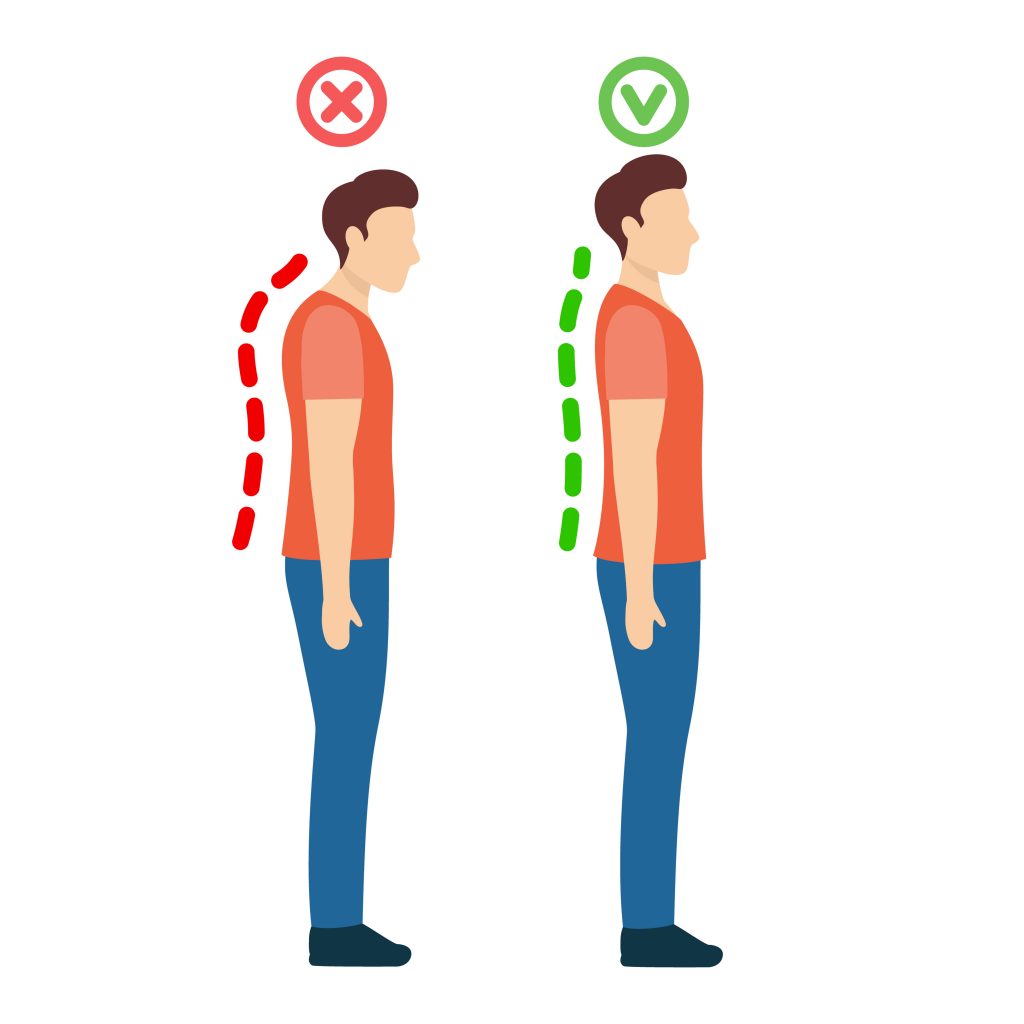
Looking at our alignment from the floor to the crown of our heads, stacking our joints in the most vertically aligned way creates the smallest moment arms on the joints of the body, and therefore the least amount of tension, friction, and strain on the body and the various joints. Many neck injuries or strains come from a posture in which the head is significantly forward of the shoulders and spine. And because everything is connected, this forward head posture pulls the shoulders forward, often causing rotator cuff injures. This posture affects the biomechanics of the shoulder joint creating wear and tear type of insults to the rotator cuff tendons. When that happens, the slightest load on the shoulder could be the final straw that broke the camel’s back, leading to tears in the tendons.
Similarly, when we stand with improper posture, it greatly affects the muscles and joints of our backs, hips, knees and feet. For instance, habitual unweighing of one leg puts not only a lot of pressure on the other leg’s muscles and joints, but also creates imbalances in the pelvis and spine. These daily sheering and tension forces eventually takes its toll on the body and injury ensues.
Another major cause of injury is improper lifting mechanics. Are you aware of your body mechanics when you lift something, or reach for something? You may have heard that you should “lift with your knees, not your back.” However, you’ll only end up with knee problems. We all need to learn to lift with your hips. Our hips have the strongest muscles – the gluteals, or buttocks – in the body, and we tend to underutilize them. Here are the main points in lifting mechanics:
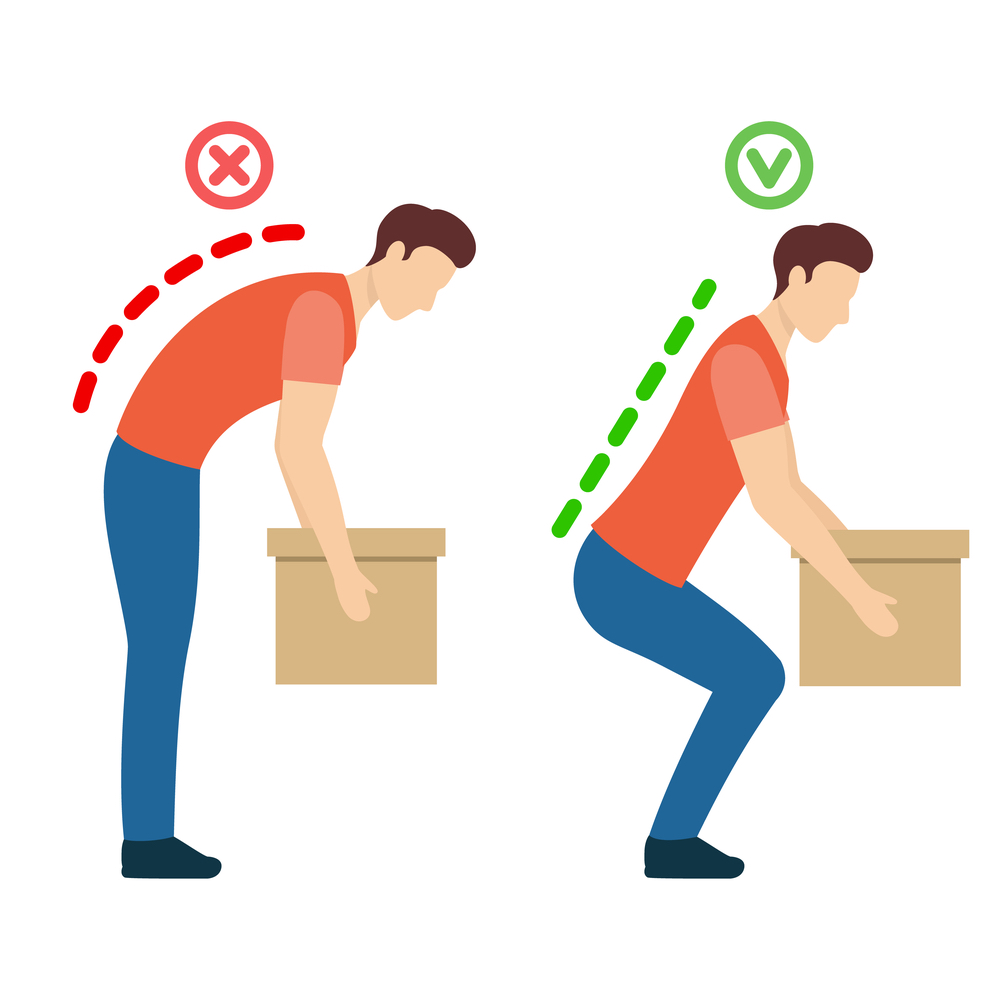
- Always keep a straight back (NOT vertical to the floor, because that will cause you to lift with your knees)
- Bend at the hips (while keeping that straight back and core muscles engaged)
- Keep objects close to your body. They weigh lightest against your body, and heaviest at arm’s length away from your body. Minimize the load by keeping objects close to you when lifting it up.
- Ask for help if it is too heavy. This is probably the most important point…if you can’t maintain the previous points when lifting something, it’s too heavy for your body and you need someone to help you lift or move it.
Ergonomics is an extension of all the points on posture. If we are striving for good posture, we need to set ourselves up for success, instead of creating more obstacles to good posture. Most people sit at desk jobs for the majority of their lives. Think about how much sitting we’re doing—sitting to eat, sitting while commuting to work, sitting at work, sitting in a car back home, sitting in front of the TV only to start all over again the next day. We need our spaces to promote good posture, instead of that forward head, forward shoulder posture I discussed earlier. Let’s look at a good ergonomic setup for sitting first.

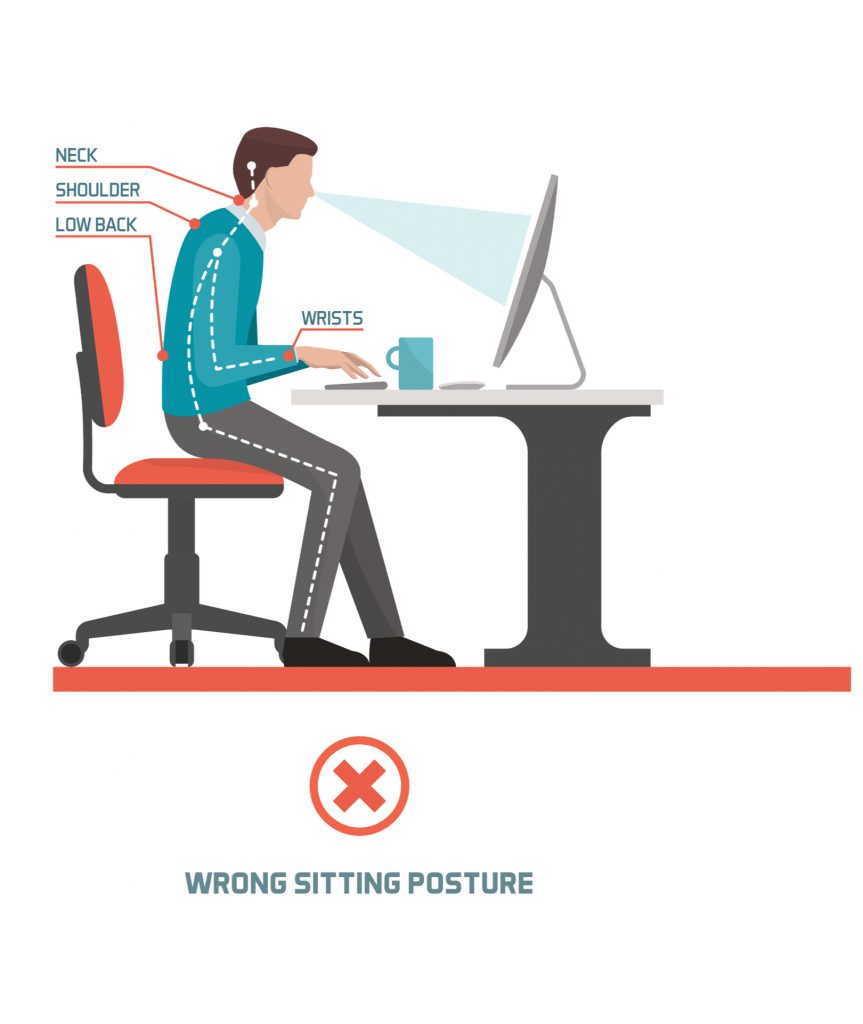
Now let’s look at a good ergonomic setup in standing. A lot of offices now have options for standing desks as well. This is highly recommended to break up the prolonged sitting (which creates significant imbalances in the body) in our lives.

Finally, breath and mindfulness are arguably the most important piece to injury prevention. Do you pay attention to the length of your breaths? Do you know the quality of your breath? Why are breath and mindfulness so important in the prevention of injuries in our bodies?
First, being mindful of the first 4 points are critical – nutrition, exercise, posture and body mechanics, as well as ergonomics. But being mindful of one’s breath is crucial for the following reason: when we are breathing short, shallow breaths, our sympathetic nervous system is most active. This part of our nervous system is responsible for our fight and flight responses to our surroundings. This means that our muscles are tense and ready for action, and we have increased stress hormones circulating in our blood. This system makes us prone to injury, as we don’t have the mindfulness to know when we are overexerting ourselves.
On the contrary, when we take long, deep breaths, our parasympathetic nervous system is most active. This system is responsible for our rest and digest actions. Here we have more relaxed muscle tone, and a decrease in stress hormones in our blood. When we are operating from this state, we are in a healing state, and injury is less likely. Mindfulness techniques work to bring us more into a parasympathetic state. There are many ways to practice mindfulness, and it doesn’t have to be regimented or structured, even though structured meditation or mindfulness movement practices such as yoga and tai chi are highly beneficial and effective. You can practice mindfulness daily, moment-by-moment by being aware of the choices you make in eating, exercising, posture, and body mechanics. Additionally, reminding yourself to check in every so often and to pay attention to the quality of your breath is the simplest, but arguably the most beneficial step in injury prevention.
–
Danél Lombard, MPT, MA, E-RYT is a Integrative Physical Therapist at the Akasha Center For Integrative Medicine. You can schedule an appointment with her by calling 310-451-8880 or emailing us at info@akashacenter.com




